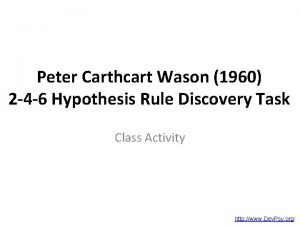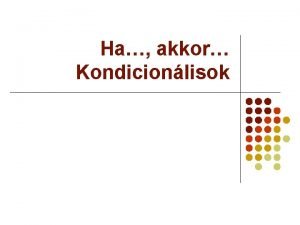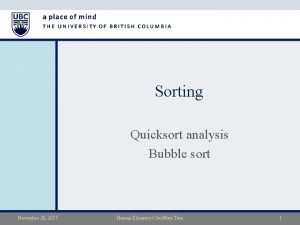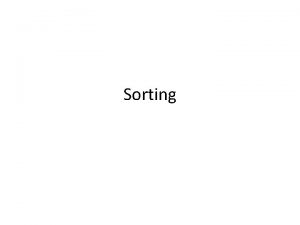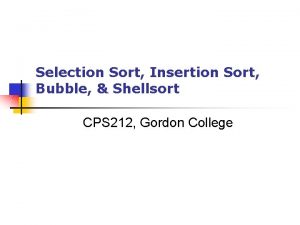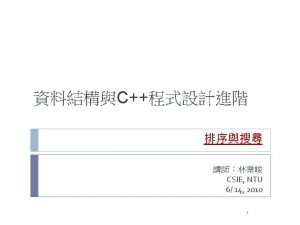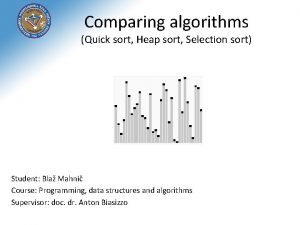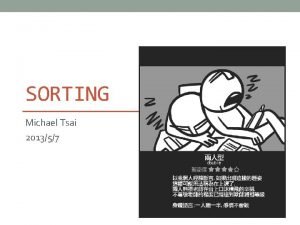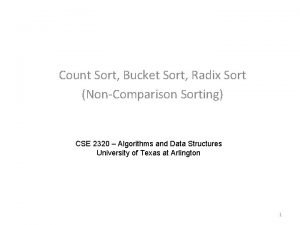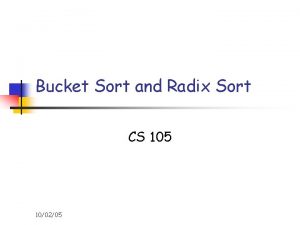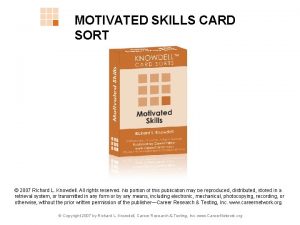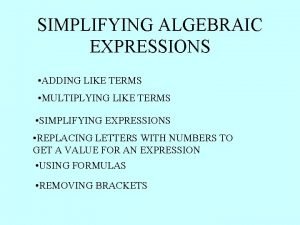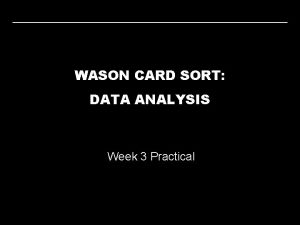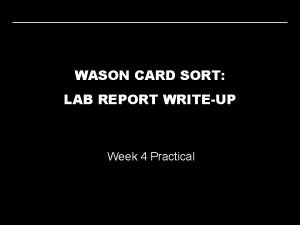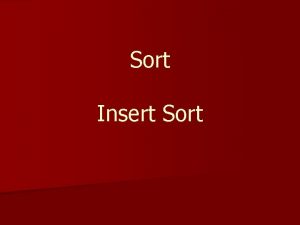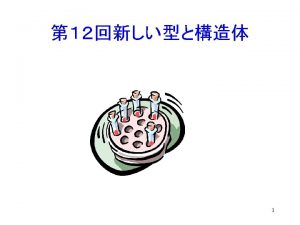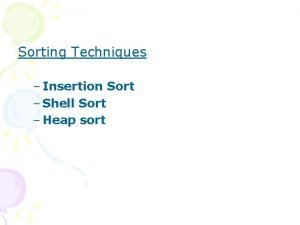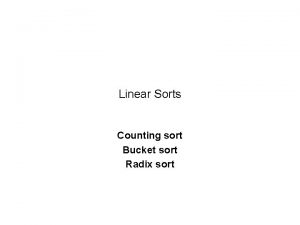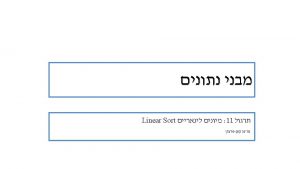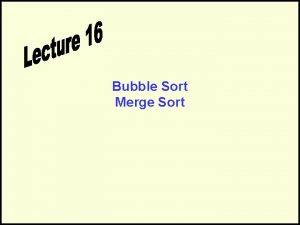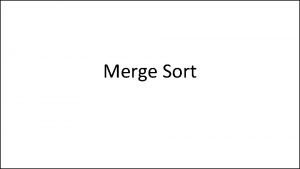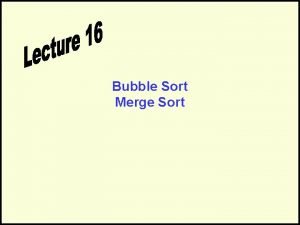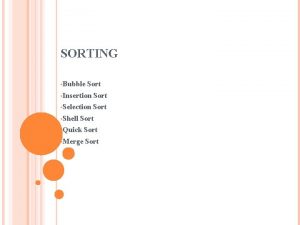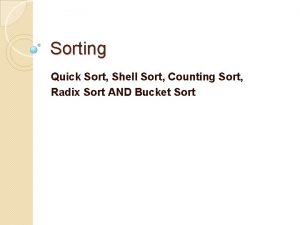WASON CARD SORT DATA ANALYSIS Week 3 Practical

















- Slides: 17

WASON CARD SORT: DATA ANALYSIS Week 3 Practical

WASON CARD SORT LECTURE 1 WEEK 3 PRACTICAL WEEK 1 NO LECTURE WEEK 2 NONPARAMETRICS 1 1 ST PRACTICAL WEEK 3 NONPARAMETRICS 2 1 ST ANALYSIS IN SPSS WEEK 4 SAMPLING DISTRIBUTIONS 1 ST ANALYSIS BY HAND WEEK 5 HYPOTHESIS TESTING 2 ND PRACTICAL WEEK 6 RELATED T-TEST 2 ND ANALYSIS IN SPSS WEEK 7 INDEPENDENT T-TEST 2 ND ANALYSIS BY HAND WEEK 8 INDEPENDENT ANOVA 3 RD PRACTICAL WEEK 9 DEPENDENT ANOVA 3 RD ANALYSIS IN SPSS WEEK 10 NO LECTURE NO PRACTICAL

WASON CARD SORT LEARNING OUTCOMES BY THE END OF THE SESSION, YOU SHOULD BE ABLE TO: Use SPSS to test the first experimental hypothesis of the Wason card sorting experiment and produce a related graph. Use SPSS to test the second experimental hypothesis of the Wason card sorting experiment and produce a related graph. Use the graphs to interpret your chi-square findings. Make a start on writing up your RESULTS and DISCUSSION sections for your lab report.

WASON CARD SORT METHOD RECAP DESIGN Half of the people in the room did the concrete first, half did the abstract. ABSTRACT then CONCRETE then ABSTRACT Research Questions Base your hypotheses on the following research questions: Q 1: Is performance better on some versions of the Wason card sorting task than others the first time it is performed? ABSTRACT then CONCRETE then ABSTRACT Q 2: Is performance on the abstract task affected if it follows a concrete scenario? ABSTRACT then CONCRETE then ABSTRACT

WASON CARD SORT The first column shows subject number. And yes, there are 180. RESULTS The third column shows whether the individual got their first problem right or wrong. 1 = RIGHT 2 = WRONG The second column shows which type of problem each individual solved first. 1= ABSTRACT 2= CONCRETE The fourth column shows whether the individual got the abstract problem right or wrong. 1 = RIGHT 2 = WRONG

WASON CARD SORT RESULTS Let’s make the data look a little more meaningful by changing the numeric values into textual values. Go to variable view and select values. For first_problem, CORRECT 1 and CORRECTA, associate the values (e. g. , 1, 2) with the appropriate value labels (e. g. , abstract, concrete; wrong, right). first_problem 1 = ABSTRACT 2 = CONCRETE CORRECT 1 1 = RIGHT 2 = WRONG CORRECTA 1 = RIGHT 2 = WRONG

WASON CARD SORT RESULTS Q 1: Is performance better on some versions of the Wason card sorting task than others the first time it is performed? CONCRETE (1 st) vs. ABSTRACT (1 st) If we are interested in comparing categorises of responses, then the chi-square test is appropriate. In SPSS, the chi-square test is hidden away underneath descriptive statistics > crosstabs. Let’s go there now.

WASON CARD SORT RESULTS Q 1: Is performance better on some versions of the Wason card sorting task than others the first time it is performed? CONCRETE (1 st) vs. ABSTRACT (1 st) In order to build a chi-square table, we need to put our various categories into rows and columns. Let’s put first_pr as a row and CORRECT 1 as a column. This will show us the frequency distributions. Under statistics, we also need to make sure the chi-square test is performed, so tick that. Under cells, also make sure that both observed and expected are clicked.

WASON CARD SORT RESULTS Q 1: Is performance better on some versions of the Wason card sorting task than others the first time it is performed? CONCRETE (1 st) vs. ABSTRACT (1 st) First problem solved * First problem correct Crosstabulation First problem correct Right First problem solved Abstract Count Expected Count Concrete Count Expected Count Total Count Expected Count Wrong Total 8 82 90 20, 5 69, 5 90, 0 33 57 90 20, 5 69, 5 90, 0 41 139 180 41, 0 139, 0 180, 0 The second table (after case processing summary) confirms our 180 observations and displays the frequency distribution of right and wrong responses for the two kinds of Wason card sort test. The third table provides us with the chi-square value, which may be reported as: χ2 (1) = 19. 74, p <. 001

WASON CARD SORT RESULTS Q 1: Is performance better on some versions of the Wason card sorting task than others the first time it is performed? Degrees of freedom Chi-square value χ2 (1) = 19. 74, p <. 001 Significance level

WASON CARD SORT RESULTS Q 1: Is performance better on some versions of the Wason card sorting task than others the first time it is performed? You will need to graphically represent your results, too Don’t forget to give your Figure a number and a title When you refer to the Figure in the main text, make sure you give the exact descriptive statistics Note: no error bars, because this is categorical data

WASON CARD SORT RESULTS Q 2: Is performance on the abstract task affected if it follows a concrete scenario? ABSTRACT (1 st) vs. ABSTRACT (2 nd) If we are interested in comparing categorises of responses, then the chi-square test is appropriate. In SPSS, the chi-square test is hidden away underneath descriptive statistics > crosstabs. Let’s go there now.

WASON CARD SORT RESULTS Q 2: Is performance on the abstract task affected if it follows a concrete scenario? ABSTRACT (1 st) vs. ABSTRACT (2 nd) In order to build a chi-square table, we need to put our various categories into rows and columns. Let’s put first_pr as a row and CORRECTA as a column. This will show us the frequency distributions. Under statistics, we also need to make sure the chi-square test is performed, so tick that. Under cells, also make sure that both observed and expected are clicked.

WASON CARD SORT RESULTS Q 2: Is performance on the abstract task affected if it follows a concrete scenario? ABSTRACT (1 st) vs. ABSTRACT (2 nd) First problem solved * Abstract problem correct Crosstabulation Abstract problem correct Right First problem Abstract solved Concrete Total Count Total Wrong 8 82 90 Expected Count 9, 5 80, 5 90, 0 Count 11 79 90 Expected Count 9, 5 80, 5 90, 0 Count 19 161 180 19, 0 161, 0 180, 0 Expected Count The second table (after case processing summary) confirms our 180 observations and displays the frequency distribution of right and wrong responses for the two kinds of Wason card sort test. The third table provides us with the chi-square value, which may be reported as: χ2 (1) = 0. 53, p =. 47

WASON CARD SORT RESULTS Q 2: Is performance on the abstract task affected if it follows a concrete scenario? Once again, you will need to graphically represent your results Don’t forget to give your Figure a number and a title When you refer to the Figure in the main text, make sure you give the exact descriptive statistics Note: no error bars, because this is categorical data If you have trouble, refer back to the Excel graph-making guides on Graham’s webpage, or ask a tutor for help

WASON CARD SORT DISCUSSION GET TOGETHER IN GROUPS OF THREE OR FOUR AND REFLECT ON TODAY’S EXPERIENCE USING THE FOLLOWING QUESTIONS Why have I done this particular statistical test? What do the data actually tell me with respect to my experimental hypotheses? What implications do the data have for the studies outlined in the intro?

SAMPLING DISTRIBUTIONS LEARNING OUTCOMES BY THE END OF THE SESSION, YOU SHOULD BE ABLE TO: Use SPSS to test the first experimental hypothesis of the Wason card sorting experiment and produce a related graph. Use SPSS to test the second experimental hypothesis of the Wason card sorting experiment and produce a related graph. Use the graphs to interpret your chi-square findings. Make a start on writing up your RESULTS and DISCUSSION sections for your lab report.
 Wason 1960
Wason 1960 Wason teszt
Wason teszt Bubble sort vs selection sort
Bubble sort vs selection sort Difference between selection sort and bubble sort
Difference between selection sort and bubble sort Bubble sort pseudocode
Bubble sort pseudocode How selection sort works
How selection sort works Bubble sort insertion sort
Bubble sort insertion sort Who invented selection sort
Who invented selection sort Selection sort vs bubble sort
Selection sort vs bubble sort Quick sort merge sort
Quick sort merge sort Quick sort merge sort
Quick sort merge sort Radix sort animation
Radix sort animation Bucket sort vs radix sort
Bucket sort vs radix sort Week by week plans for documenting children's development
Week by week plans for documenting children's development Motivated skills card sort pdf
Motivated skills card sort pdf Card sort transformations answers
Card sort transformations answers Activity card sort
Activity card sort Combining like terms card sort
Combining like terms card sort
